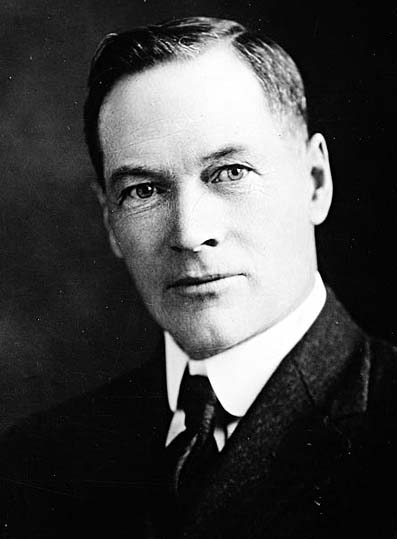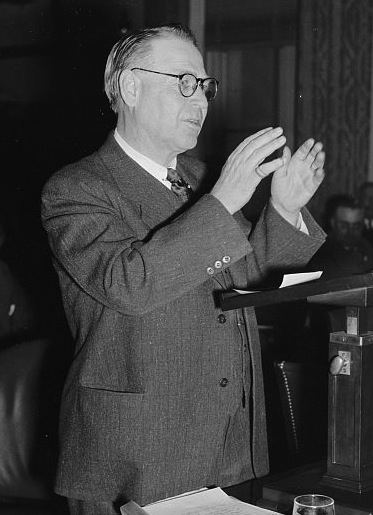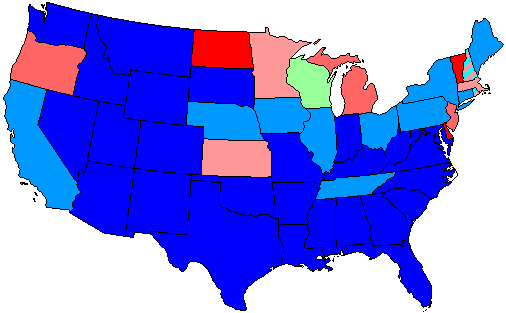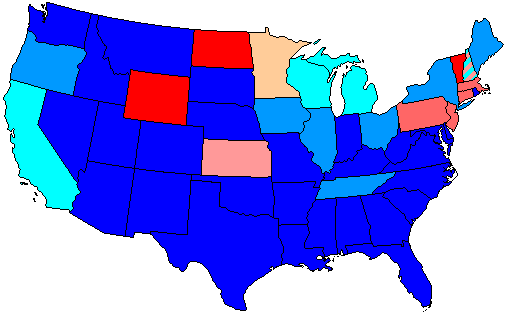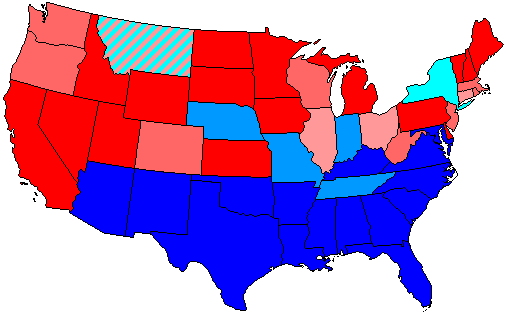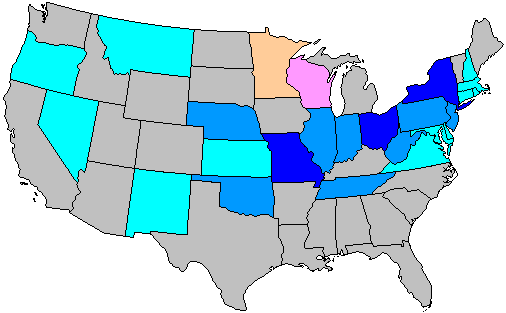|
Montana's 2nd Congressional District
Montana's 2nd congressional district is a congressional district in the United States House of Representatives that was apportioned after the 2020 United States census. The first candidates ran in the 2022 elections for a seat in the 118th United States Congress. From 1913 to 1993, Montana had two congressional seats. From 1913 to 1919, those seats were elected statewide at-large on a general ticket. After 1919, however, the state was divided into geographical districts. The 2nd covered the eastern part of the state, including Billings, Glendive, Miles City, and other towns. After 1993, the second seat was eliminated and the remaining seat was elected . After the release of the 2020 United States census results, Montana regained its 2nd congressional district. On November 12, 2021, Montana's Districting and Apportionment Commission approved a new congressional map in which the 2nd congressional district would cover the eastern portion of Montana, in a configuration similar to ... [...More Info...] [...Related Items...] OR: [Wikipedia] [Google] [Baidu] |
Billings, Montana
Billings is the largest city in the U.S. state of Montana, with a population of 117,116 as of the 2020 census. Located in the south-central portion of the state, it is the seat of Yellowstone County and the principal city of the Billings Metropolitan Area, which had a population of 184,167 in the 2020 census. It has a trade area of over 500,000. Billings was nicknamed the "Magic City" because of its rapid growth from its founding as a railroad town in March 1882. The nearby Crow and Cheyenne peoples called the city ''É'êxováhtóva''. With one of the largest trade areas in the United States, Billings is the trade and distribution center for much of Montana east of the Continental Divide, Northern Wyoming, and western portions of North Dakota and South Dakota. Billings is also the largest retail destination for much of the same area. The city is experiencing rapid growth and a strong economy; it has had and is continuing to have the largest growth of any city in Montana. Parts ... [...More Info...] [...Related Items...] OR: [Wikipedia] [Google] [Baidu] |
1920 United States House Of Representatives Elections In Montana
The 1920 United States House of Representatives elections were held, coinciding with the election of President Warren G. Harding, the first time that women in all states were allowed to vote in federal elections after the passage of the 19th Amendment. The incumbent Democratic administration of Woodrow Wilson lost popularity after the conclusion of World War I in 1918, as American voters hoped to return to isolationism and avoid military conflict in the future. Heedless of the prevailing national mood, Wilson advocated American leadership in a new international order under the League of Nations, alienated voters of German and Irish ancestry, and constantly struggled with a Congress controlled by the opposition Republican Party. Harding and the Republicans promised a new start for the nation and a disassociation from Europe's political troubles that most voters found appealing. As a result, the Republicans picked up 63 seats in the House of Representatives, with most of the ga ... [...More Info...] [...Related Items...] OR: [Wikipedia] [Google] [Baidu] |
1936 Montana Gubernatorial Election
The 1936 Montana gubernatorial election took place on November 3, 1936. Incumbent Governor of Montana Elmer Holt, who became governor in 1935 upon the death of Frank Henry Cooney, ran for re-election. He was challenged in the Democratic primary by a number of challengers, and was narrowly defeated for renomination by United States Congressman Roy E. Ayers of Montana's 2nd congressional district. Ayers advanced to the general election, where he faced Frank A. Hazelbaker, the former Lieutenant Governor of Montana and the Republican nominee. Following a close election, Ayers narrowly defeated Hazelbaker to win what would be his first and only term as governor. Democratic primary Candidates * Roy E. Ayers, United States Congressman from Montana's 2nd congressional district *Elmer Holt, incumbent Governor of Montana * Miles Romney Sr., former State Senator, former Mayor of Hamilton *H. L. Maury *Frank F. Hayes Results Republican primary Candidates * Frank A. Hazelbaker, ... [...More Info...] [...Related Items...] OR: [Wikipedia] [Google] [Baidu] |
1934 United States House Of Representatives Elections In Montana
The 1934 United States House of Representatives elections were held in the middle of President Franklin D. Roosevelt's first term. The Democratic Party continued its progress, gaining another 9 net seats from the opposition Republican Party, who also lost seats to the Progressive Party. The Republicans were reduced below one-fourth of the chamber for the first time since the creation of the party. The Wisconsin Progressive Party, a liberal group which allied with the Democrats, also became a force in Wisconsin politics. The 1934 elections can be seen as a referendum on New Deal policies. While conservatives and people among the middle class who did not bear the brunt of the depression saw New Deal programs as radical, lower-income voters overwhelmingly voted in this election cycle to continue the implementation of Roosevelt's agenda. This marked the first time that an incumbent president's party did not lose seats in both houses in a midterm election, followed by 1998 and 2002. ... [...More Info...] [...Related Items...] OR: [Wikipedia] [Google] [Baidu] |
1932 United States House Of Representatives Elections In Montana
The 1932 United States House of Representatives elections was an election for the United States House of Representatives in 1932 which coincided with the landslide election of President Franklin D. Roosevelt. The inability of Herbert Hoover to deal with the Great Depression was the main issue surrounding this election, with his overwhelming unpopularity causing his Republican Party to lose 101 seats to Roosevelt's Democratic Party and the small Farmer–Labor Party, as the Democrats expanded the majority they had gained through special elections to a commanding level. This round of elections was seen as a referendum on the once popular Republican business practices, which were eschewed for new, more liberal Democratic ideas. This was the first time since 1894 (and the last time as of ) that any party suffered triple-digit losses, and the Democrats posted their largest net seat pick-up in their history. These elections marked the beginning of a period of dominance in the House fo ... [...More Info...] [...Related Items...] OR: [Wikipedia] [Google] [Baidu] |
Democratic Party (United States)
The Democratic Party is one of the two major contemporary political parties in the United States. Founded in 1828, it was predominantly built by Martin Van Buren, who assembled a wide cadre of politicians in every state behind war hero Andrew Jackson, making it the world's oldest active political party.M. Philip Lucas, "Martin Van Buren as Party Leader and at Andrew Jackson's Right Hand." in ''A Companion to the Antebellum Presidents 1837–1861'' (2014): 107–129."The Democratic Party, founded in 1828, is the world's oldest political party" states Its main political rival has been the Republican Party since the 1850s. The party is a big tent, and though it is often described as liberal, it is less ideologically uniform than the Republican Party (with major individuals within it frequently holding widely different political views) due to the broader list of unique voting blocs that compose it. The historical predecessor of the Democratic Party is considered to be th ... [...More Info...] [...Related Items...] OR: [Wikipedia] [Google] [Baidu] |
Roy E
Roy is a masculine given name and a family surname with varied origin. In Anglo-Norman England, the name derived from the Norman ''roy'', meaning "king", while its Old French cognate, ''rey'' or ''roy'' (modern ''roi''), likewise gave rise to Roy as a variant in the Francophone world. In India, Roy is a variant of the surname ''Rai'',. likewise meaning "king".. It also arose independently in Scotland, an anglicisation from the Scottish Gaelic nickname ''ruadh'', meaning "red". Given name * Roy Acuff (1903–1992), American country music singer and fiddler * Roy Andersen (born 1955), runner * Roy Andersen (South Africa) (born 1948), South African businessman and military officer * Roy Anderson (American football) (born 1980), American football coach * Sir Roy M. Anderson (born 1947), British scientific adviser * Roy Andersson (born 1943), Swedish film director * Roy Andersson (footballer) (born 1949), footballer from Sweden * Roy Chapman Andrews (1884–1960), American natu ... [...More Info...] [...Related Items...] OR: [Wikipedia] [Google] [Baidu] |
1930 United States House Of Representatives Elections In Montana
The 1930 United States House of Representatives elections was an election for the United States House of Representatives in 1930 which occurred in the middle of President Herbert Hoover's term. During the election cycle, the nation was entering its second year of the Great Depression, and Hoover was perceived as doing little to solve the crisis, with his personal popularity being very low. His Republican Party was initially applauded for instituting protectionist economic policies, which were intended to limit imports to stimulate the domestic market: however, after the passage of the heavily damaging Smoot-Hawley Tariff, a policy that was bitterly opposed by the Democratic Party, public opinion turned sharply against Republican policies, and the party bore the blame for the economic collapse. While the Democrats gained 52 seats in the 1930 midterm elections, Republicans retained a narrow one-seat majority of 218 seats after the polls closed versus the Democrats' 216 seats; how ... [...More Info...] [...Related Items...] OR: [Wikipedia] [Google] [Baidu] |
1928 United States House Of Representatives Elections In Montana
The 1928 United States House of Representatives elections was an election for the United States House of Representatives in 1928 which coincided with the election of President Herbert Hoover. The strength of the U.S. economy resulted in Hoover's Republican Party victory in the election, helping them to scoop up 32 House seats, almost all from the opposition Democratic Party, thus increasing their majority. The big business-supported wing of the Republican Party continued to cement control. Republican gains proved even larger than anticipated during this election cycle, as an internal party feud over the Prohibition issue weakened Democratic standing. Losses of several rural, Protestant Democratic seats can be somewhat linked to anti-Catholic sentiments directed toward the party's presidential candidate, Al Smith. However, this would be the last time for 68 years that a Republican House was re-elected. Results summary SourceElection Statistics - Office of the Clerk Specia ... [...More Info...] [...Related Items...] OR: [Wikipedia] [Google] [Baidu] |
1926 United States House Of Representatives Elections In Montana
The 1926 United States House of Representatives elections was an election for the United States House of Representatives in 1926 which occurred in the middle of President Calvin Coolidge's second term. Coolidge's Republican Party lost seats to the opposition Democratic Party, but it retained a majority. The most pressing national matters at the time were fragmented, generally related to government's relationship to business or to providing social aid. However, no predominant issue was able to cast a shadow over the election. The small, populist Farmer–Labor Party also held two seats following the election. Overall results Source: Special elections Elections are listed by date and district. , - ! , John E. Raker , , Democratic , 1910 , , Incumbent died January 22, 1926.New member elected August 31, 1926.Republican gain. , nowrap , , - ! , Lawrence J. Flaherty , , Republican , 1924 , , Incumbent died June 13, 1926.New member elected August 31 ... [...More Info...] [...Related Items...] OR: [Wikipedia] [Google] [Baidu] |
1924 United States House Of Representatives Elections In Montana
The 1924 United States House of Representatives elections was an election for the United States House of Representatives in 1924 which coincided with the election to a full term of President Calvin Coolidge, who had replaced Warren Harding following his death. Coolidge's popularity helped his Republican Party to gain a net 22 seats from the opposition Democratic Party, cementing their majority. The burgeoning economy and Republican pro-business policies caused the party to gain popularity. An internal split somewhat reduced House gains, as a progressive faction of the party continued to antagonize party leadership. In the early stages of the election, there were fears that the Republicans would be swamped at the polls due to several scandals in the administration of President Warren Harding. However, after the chief executive's death, his incidents were painted as personal problems that did not reflect the state of the party. The populist Farmer–Labor Party also gained a seat in ... [...More Info...] [...Related Items...] OR: [Wikipedia] [Google] [Baidu] |
1922 United States House Of Representatives Elections In Montana
The 1922 United States House of Representatives elections were held for the United States House of Representatives in November 1922, in the middle of President Warren G. Harding's term. Just as voters had expressed their distrust of Wilson in 1920, now voters had a chance to express the widespread feeling that Congress had failed to address economic problems, especially the brief but sharp economic recession of 1921–1922. Most of the seats that Republicans lost had long been held by Democrats, who now returned with an even stronger base in the major cities. The Republican Party lost a net of 77 seats to the opposition Democratic Party. The Republicans were neither unified nor well led, and they could boast of very few successes except tax cuts for the wealthy and for corporations, and higher tariffs that pleased manufacturing interest but raised consumer prices. With Senator Bob La Follette as their unofficial leader, some progressives formed a small but highly vocal group on ... [...More Info...] [...Related Items...] OR: [Wikipedia] [Google] [Baidu] |
